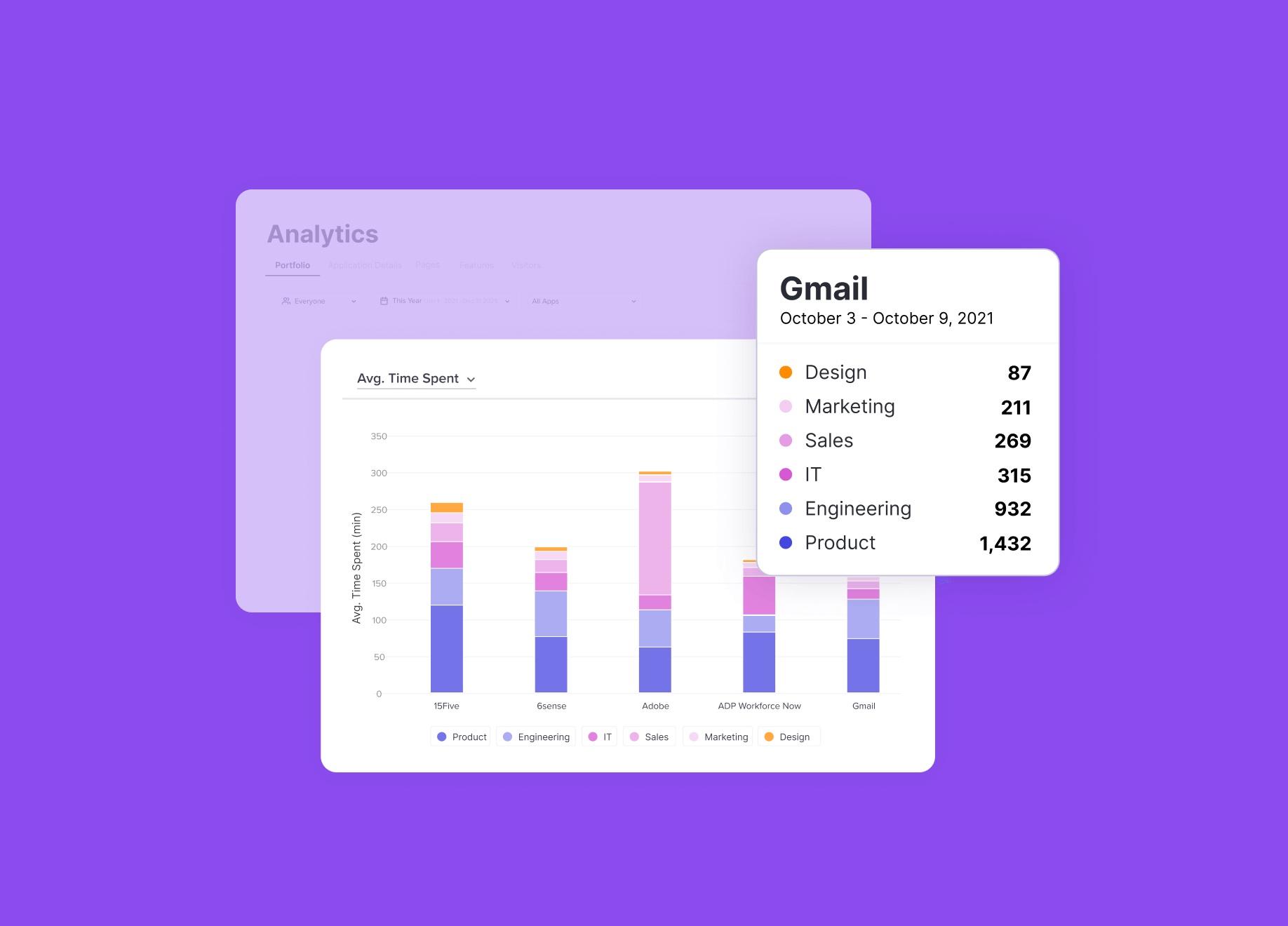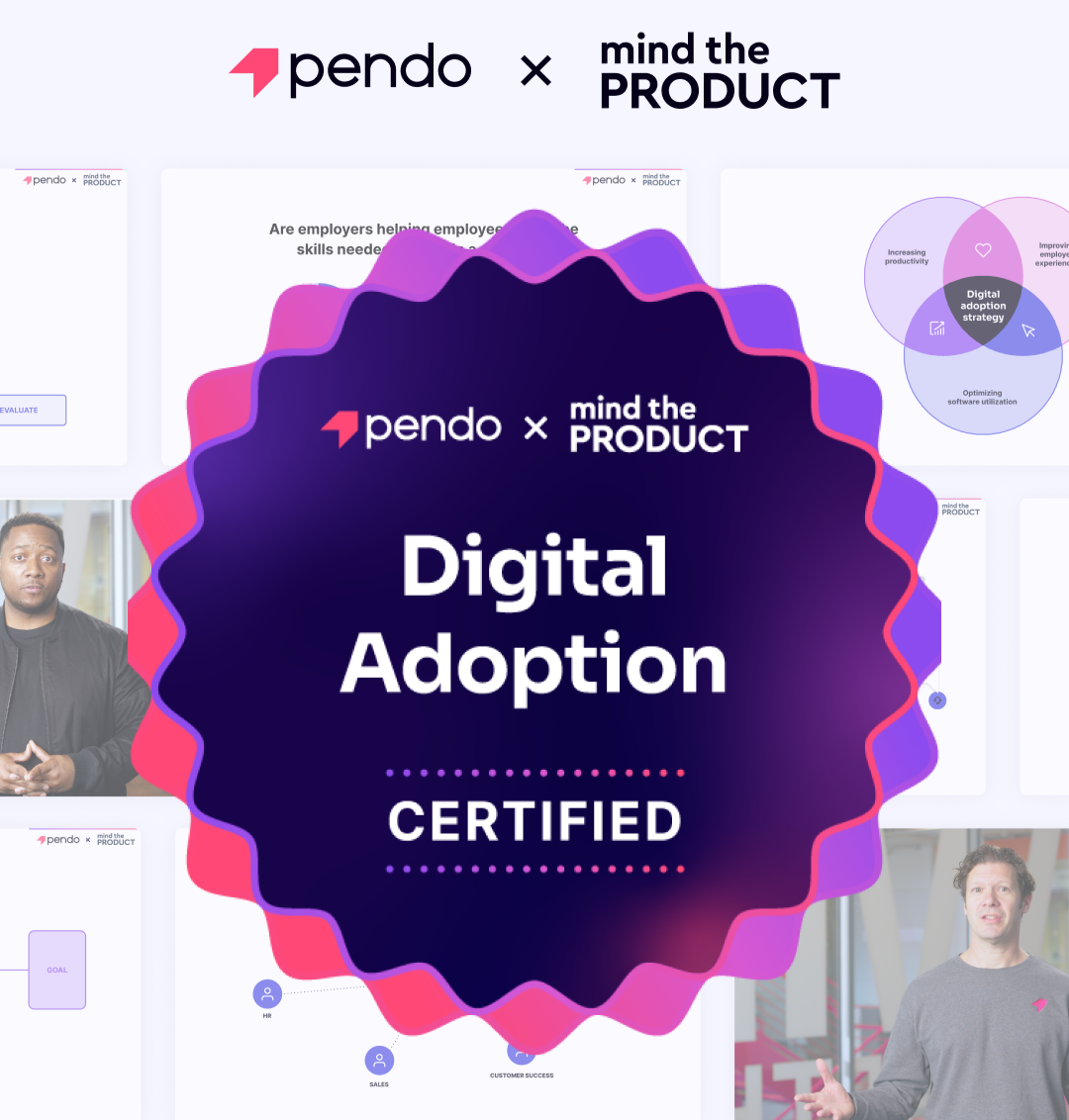Table of Contents
What is product adoption?
Product adoption is the process of user (or customer) activation for a web or mobile application. Adoption helps product teams determine if the product is delivering on its intended value, measured by how many users interact with the product. In the most basic sense, adoption is a leading indicator of a healthy software product (and company).
Why does product adoption matter?
With the shift to subscription-based software licensing, product engagement—and specifically product adoption—has become much more critical than it was in the on-prem era. Product managers have always focused on improving the customer experience, but promoting activation early is more important than ever in SaaS, where software products are purchased every month.
Product adoption metrics
Product adoption can be measured according to these metrics:
- Stickiness: Stickiness refers to the number of users who log in to the product a minimum number of times, expressed as a count over time.
- Feature adoption: Feature adoption measures how many users interact with your product’s specific features at a given moment, or over time.
- Growth: Growth measures the net effect of your user acquisition and retention efforts. In other words, are you gaining new users faster than you are losing existing ones? Growth can be achieved by adding new accounts or increasing usage within existing accounts. It’s expressed as the sum of new and recovered accounts or visitors divided by dropped accounts or visitors.
- Monthly active users (MAU): The average number of unique visitors to your product each month.
- Weekly active users (WAU): The average number of unique visitors to your product each week.
- Daily active users (DAU): The average number of unique visitors to your product each day.
How to measure product adoption?
You can measure product adoption as a rate relative to new user signups for a given period of time.
For example:
Monthly Product Adoption Rate (%) = [new MAU / monthly signups] * 100.
The way you choose to measure product adoption will largely depend on what it means to be an active user of your product. If your software is one customers should be accessing every day, a DAU metric might make the most sense. Or, if your product is B2C, you might want to look at frequency of conversions (e.g. purchases) or time spent in the app.
How to increase product adoption
Boosting product adoption rates comes down to improving your product; the better experience you create, the more likely users are to continue using your product. In addition to putting together a thoughtful in-app onboarding strategy, there are some other key ways to improve product adoption:
- Leverage product usage data: You can’t improve what you don’t measure. In order to assess product adoption, you should lean on product usage data to understand how users are engaging, where they are getting stuck, and any opportunities to improve their experience with your application. There are plenty of product adoption metrics to choose from, but we recommend tracking feature adoption, stickiness, and growth (which also make up your Product Engagement Score).
- Communicate with users in-app: The best way to raise awareness of key features and encourage better use of your product is through in-app messaging. By communicating with users in-app, you’ll be able to reach them when this information will be most relevant, whether the purpose is user education, feature announcements, onboarding, or otherwise.
- Bring support inside the product: Housing support materials in your product encourages users to self-serve when they get stuck or have a question, helping to minimize the likelihood that they’ll give up and leave the product entirely. While it’s not usually the first thing that comes to mind, making support more accessible is an important tactic for driving product adoption.
- Collect user feedback: In addition to quantitative usage data, collect qualitative feedback from your users to better understand their experience with your product and anything they feel is missing. Use in-app surveys to ask users what they think of a specific feature, or to reach certain segments of your user base specifically.
Onboarding’s impact on the product adoption process?
The post-signup period is the most crucial in a product lifecycle—after the first day, product adoption rates drop precipitously. Onboarding new users starting with the first time they open the web or mobile app is, therefore, absolutely critical. But product onboarding happens whether the experience is managed or not. Companies that focus on the onboarding experience can make their users proficient much more quickly and drive product adoption metrics like active use and retention.
The growth of SaaS applications has dramatically reduced customers’ switching costs. They are much more likely to churn if they don’t realize value quickly. Product adoption is contingent on an onboarding flow that:
- Quickly explains how the product works and its use cases
- Conveys the product’s benefits and differentiation
- Highlights and guides users to the most valuable features
- Prompts users to come back to the product over and over
What is the product adoption curve?
The product adoption curve is a way to think about how (and when) different types of users adopt your product. As the name suggests, it is shaped like a bell curve and includes five types of software users: Innovators, Early Adopters, Early Majority, Late Majority, and Laggards.
Every product’s user base is diverse—including different personas, use cases, and technical proficiencies. It’s important to consider how these factors will impact users’ likelihood to adopt as well as your adoption strategies and tactics. Here’s a quick overview of the product adoption curve:
- Innovators: These are the very first people to use and purchase your product. They are likely tech enthusiasts (and already using plenty of other software products), looking to explore the latest tool in your space. While these users are the least likely to purchase your highest pricing tier, they are a great source of feedback as some of the first people to utilize your solution. Pro tip: Use in-app guides to collect feedback from Innovators while they are actively engaging with your product.
- Early Adopters: This group is similar to Innovators in that they are interested in trying out what’s new, but they are more likely to have a direct need for your product. Early Adopters can also help inform your go-to-market strategy, since your product should aim to solve these users’ pain points.
- Early Majority: The Early Majority group is interested in a product that directly solves their needs. Compared to Early Adopters, they are less likely to tolerate product bugs and issues, making it crucial to ensure your product is stable and helps users achieve their jobs-to-be-done. Based on the product adoption curve, roughly a third of your users will come from this group.
- Late Majority: These users likely know your product exists, but haven’t made the leap to use or purchase it yet. In order to drive adoption within this group, it’s important to educate them about your product in a way that addresses their past hesitation. One angle that can be effective is that using your product will offer them a competitive advantage in the market.
- Laggards: Laggards are the last people to adopt your product, as they are (or have been) skeptical of its value. Since these users make up a relatively small portion of your user base, it’s not as important to sell to them directly. Reaching this phase might even signal the need for more innovation or iteration of your product offering.
What factors influence product adoption rate?
There are multiple factors that influence your product adoption rate. In the most basic sense, users need to have a clear understanding of the value your product delivers, what its key features are, and how to use it effectively. This is where onboarding comes in. Your onboarding experience needs to help users become comfortable enough in the product that they start using it for its intended purpose—and make it part of their everyday lives. By leveraging in-app onboarding, teams can educate and guide new users to success with walkthroughs, tooltips, and other types of in-app messages. Even better, this strategy also allows you to personalize onboarding flows for different types of users (e.g. users with different roles) and ensure the content is relevant to users’ specific needs.
Beyond onboarding, adoption also hinges on your product having an intuitive user interface (UI) that doesn’t add friction to users’ experience. In order to identify pain points or where users are getting stuck, teams can utilize product analytics to understand how users move through the product, which (if any) key features aren’t being used, and if there is any dropoff that needs to be addressed. From there, leverage in-app guides to nudge users to and through workflows and provide in-context help as they navigate the product.
Where can I learn more about product adoption?
For those looking to dig a little deeper into product adoption and feature adoption, there are a number of books on the subject, including “Crossing the Chasm” by Geoffrey A. Moore, “The Innovator’s Dilemma” by Clayton M. Christensen, and “The Lean Startup” by Eric Ries. Pendo has also published information about user onboarding, as well as driving ROI from product investments.




